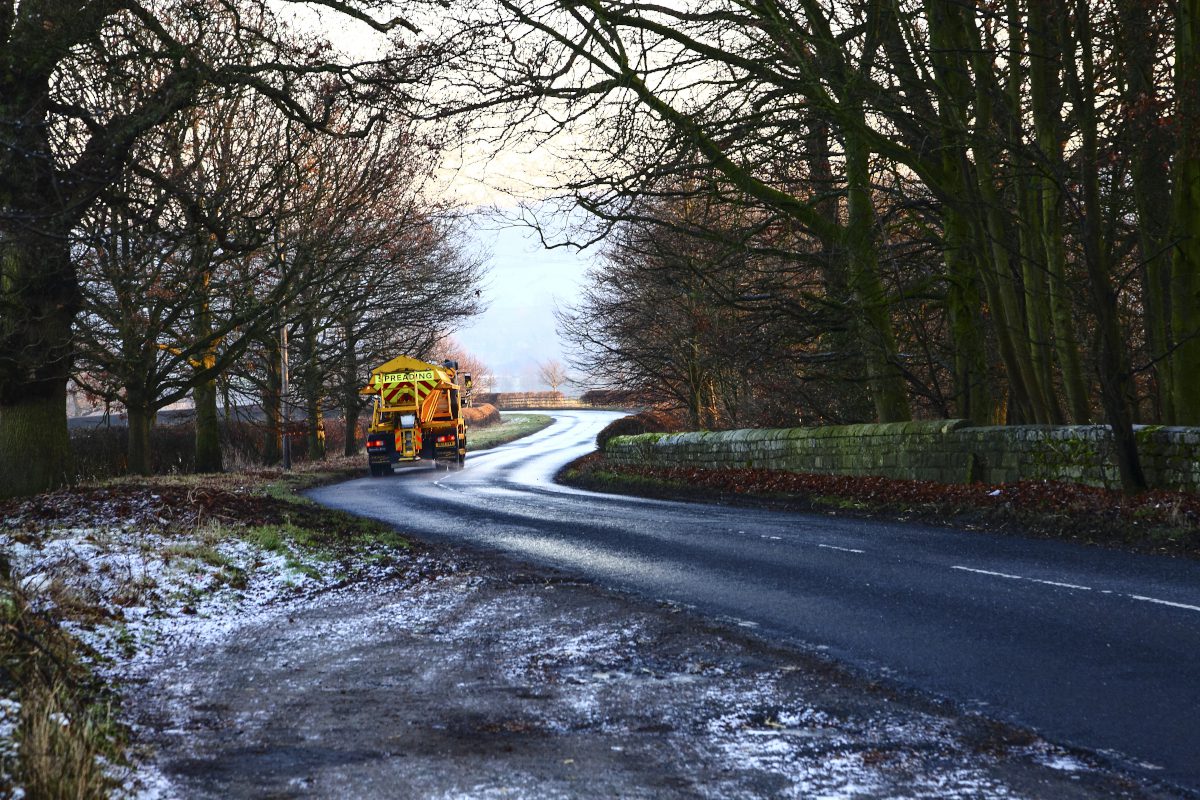
Gritting is one of the most effective and cost-effective ways to keep the economy moving through adverse weather with safer roads that are free of ice and snow. But what are the environmental impacts of introducing salt into the environment and can these be mitigated? In this article, winter gritting, grounds maintenance and landscape management firm Gritit offers a few thoughts on the matter
Research has shown that there can be a direct impact to plants living in very close proximity to roads, but beyond this, salts within the soil can also drain into groundwater. Potential long-term impacts could be changes to the nitrogen cycle or forcing roadside vegetation and environments to adapt to be more salt tolerant in nature.
Intuitively, doing anything that may upset the fine balance of natural ecosystems should be avoided but gritting has become fundamental to keeping our country moving and with a professional approach can have minimal impacts.
Finding a balance
When it comes to salt, the evidence is that it remains one of the best options we have available: The UK’s trade association for salt manufacturing, the Salt Association, describes de-icing salt as “not only the cheapest form of de-icing material, it is also non-toxic” . While noting that both UK and European regulations take into consideration any activities that may increase the levels of sodium chloride concentration in water, the Salt Association argues that in many situations “residual salt is gradually diluted and disposed of through natural processes”. Even so, the body tasked with representing the salt industry does stress that “de-icing salt has a low environmental impact when used responsibly”.
A key factor in responsible practice is the better design and maintenance of roads and drains to minimise run-off into nearby watercourses. Heavy rain can result in overflow and surface run-off of the diluted salt where drainage is insufficient or drains are blocked. In this situation, the overflow will go straight into the surrounding land. Beyond flood risks, this is a key reason for authorities to ensure drains are effectively cleared.
Beyond these pre-emptive steps, gritting itself can either be conducted in a way that is responsible or that can exacerbate environmental risks. One of the things that defines best practice in gritting is the adoption of approaches that are actually more environmentally friendly and more economical. It’s important to note that there’s no tradeoff between effective gritting and achieving minimal impact.
Where problems can arise is when organisations use excessive amounts of salt – dumping larger quantities than needed rather than taking a more considered approach. The motivation for this can be the fear of litigation and a need to over-compensate by spreading larger quantities of grit to ensure that an organisation can be seen to be taking action. Pink grit that is more noticeable can be popular for this reason – even though it’s aesthetically less attractive, can stain carpets when walked indoors and can also cause issues with blocked drains.
Diminishing returns, and the scientific approach
Ironically, spreading more grit doesn’t automatically result in better results. Instead, it is better to take a more scientific approach, and use salt only when it is necessary and likely to be effective. We recommend – and offer – exactly this type of service. A proactive salting service is guided by accurate forecast data that ensures that gritting only takes place when there is a probability of ice forming. For example, we model conditions using very accurate data from MetDesk, which offers a detailed real-time view of road surface temperatures, which can be combined with historical data. This takes the guesswork out of service delivery and helps to save our clients cost, as we won’t be spreading salt when it isn’t necessary.
A proactive approach is important as it is more effective to grit before ice forms (The Salt Handbook states it can reduce costs substantially – by up to 90% in some studies – and also reduce the total quantity of salt used during a storm by up to a factor of four). In the case of snowfall, proactive salting can also make it easier to remove snow with a plough. If the area has been gritted before any snowfall, this stops it freezing to the pavement. On the other hand – trying to address snow after the fact with excessive quantities of salt is not only wasteful, but fighting a losing battle. Salt is really only effective for up to 2cm of snow, so it’s important to clear snow first and then grit. Again, doing things the right way saves time, money, and reduces environmental impact.
Other factors to help avoid excessive salt use
Training operatives correctly and using well-maintained, appropriate equipment are also important: properly calibrated spreaders (adjusted to provide the correct spread rate) can avoid excess salt use and ensure the amount used is adequate to address the conditions.
The type of salt itself is also important: Gritit uses sustainable white marine salt as our de-icing agent. This salt is evaporated seawater that provides the highest concentration when it becomes a saline solution through contact with moisture and pressure. It is a better environmental choice as it is more sustainable than mined rock salt and requires less volume spreading for de-icing effects and is cleaner, leaving less residue on sites.
Pavements and pragmatism
There are also cultural factors that have a bearing on the question of how much salt to use. As individuals and organisations we can prioritise ostentatious safety precautions over equally effective and pragmatic courses of action. As pedestrians too often we expect paths and car parks in private premises to be totally pristine. Yet clearing and salting a central section of a path does provide safe pedestrian access – it doesn’t have to be cleared to full width and all paths and these smaller areas can be easier to keep safe (also helping manage drainage and avoid run off into natural environments).
With adequate communication of which areas are safe, this approach can be used to help pedestrians adjust their behaviour – just as motorists do in icy conditions – and still stay safe. As with any aspect of risk management, having well-established plans, clear processes and well-trained staff on the ground is the key to keeping people and environments safe.






